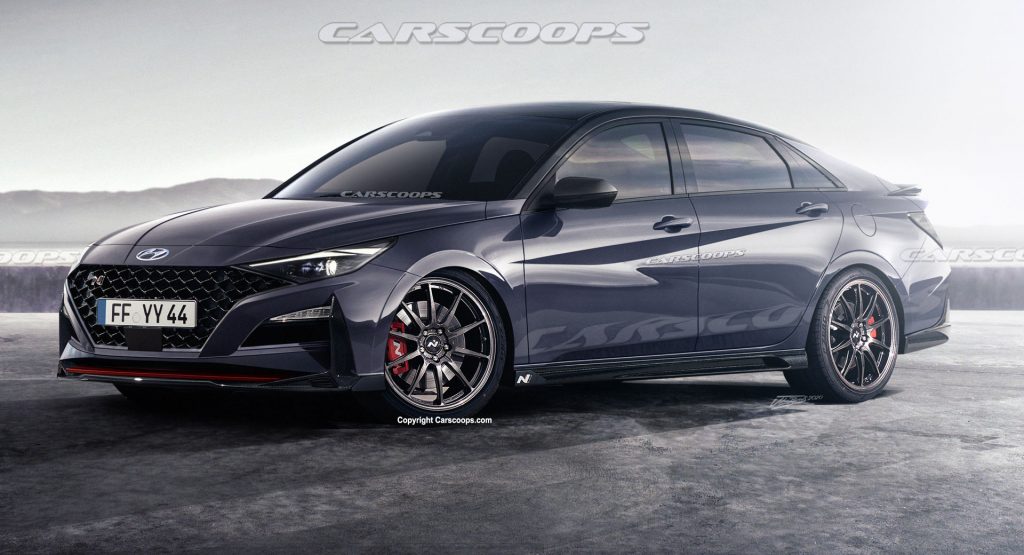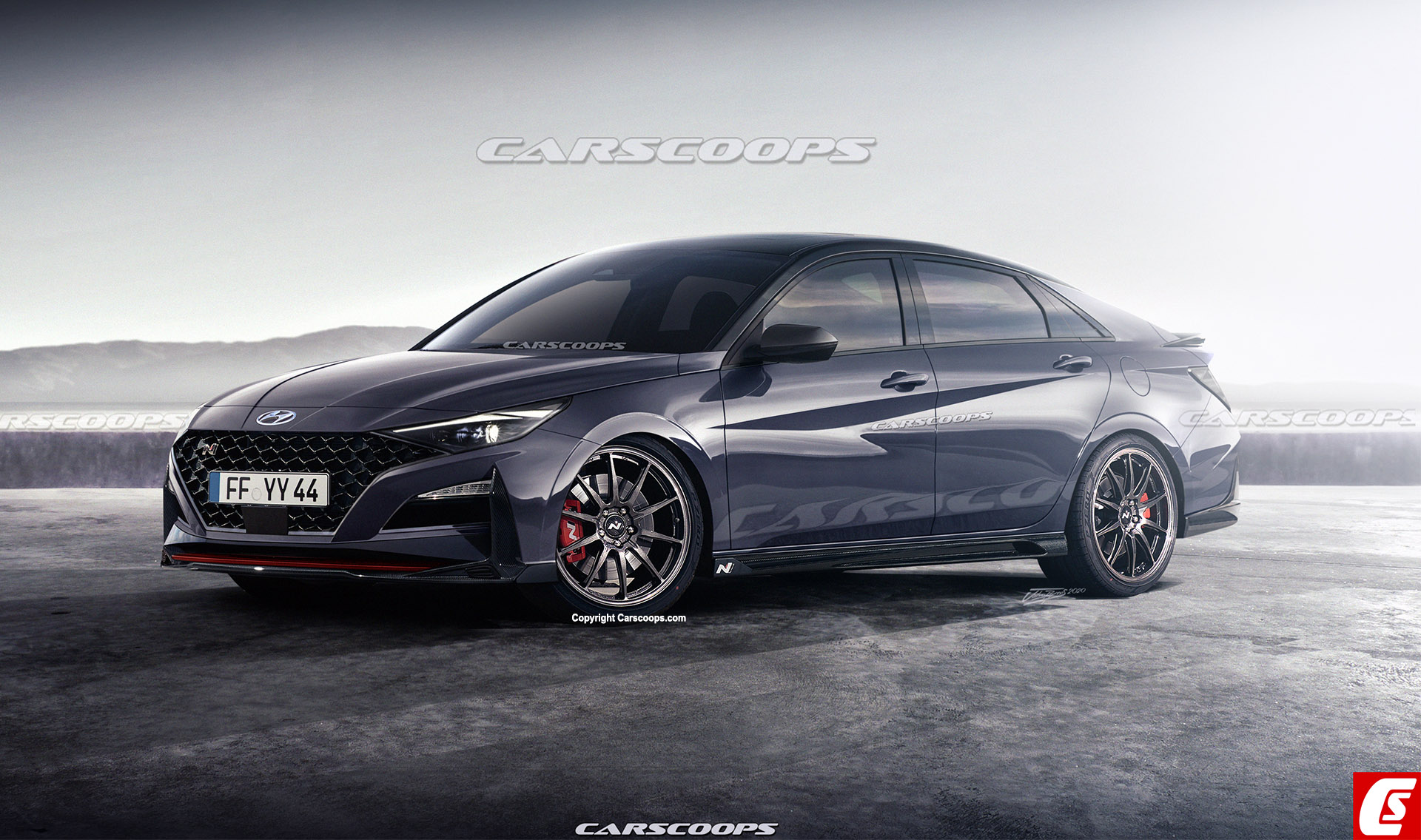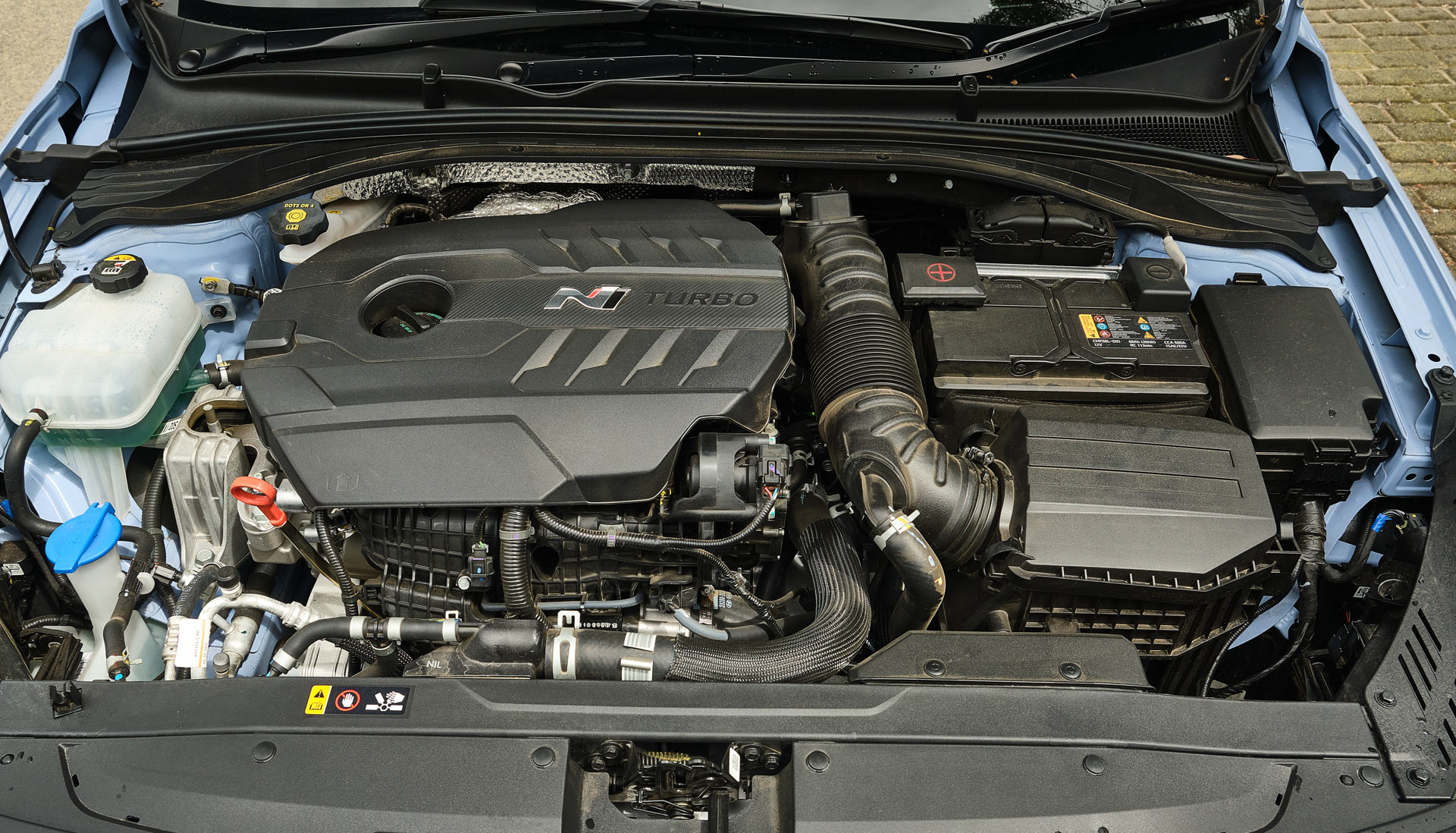Love or hate it, Hyundai’s new Elantra sedan is a breath of fresh air among a small sedan segment plagued by staid conservatism. So much so, that the seventh-generation version shakes things up by employing Hyundai’s new ‘Parametric Dynamics’ design language – combining the automaker’s previous ‘Sensuous Sportiness’ styling with hard crease lines inspired from geometric crystals.
Related: 2021 Hyundai Tucson Will Bring Dramatic New Looks And More Curb Appeal
However, there is always room for visual and dynamic improvement; which is why this illustrated study looks at the new Elantra in the long-rumored N-performance variant. So what can we expect in terms of looks, performance and handling? Let’s delve further.
The Little Details
It wouldn’t be a go-fast model without the mandatory performance looks which, whilst not as outlandish as, let’s say, Honda’s wild Type-R, still manages a menacing persona. Aggressive air intakes, large wheels, red-accented highlights and a lowered stance? Affirmative!
Frontal changes would consist of a higher trapezoidal mesh grille, new headlight design, and carbon fibre lower splitter arrangement. Carbon-fibre side skirts, rear diffuser, subtle spoiler and large dual exhausts complete the ‘go-fast’ look.
Little details, like the contrasting gloss black roof and window frames, help exude a sleeker appearance. Critics of the diagonal front door pressings will also be pleased, with those geometric creases erased in favour of more conservative sheet metal.
A Fast Place To Be
Less polarizing than the exterior, the cabin is contemporary and technologically rich. It features Qi wireless charging, and immersive dual 10.25-inch displays incorporating segment-first wireless Apple CarPlay & Android Auto. N-specification would turn up the heat with a flat-bottomed, three-spoke leather-wrapped steering wheel with obligatory N-mode button, figure-hugging sports seats, carbon fibre inlays, and a charcoal upper cabin environment.

An ‘N’ model would spice up the regular 2021 Elantra’s interior pictured above with an assortment of upgrades like a flat-bottom steering wheel, bucket seats and more
Hyundai’s digital key enables the Elantra to be unlocked, started and driven without a normal key by using an NFC card or smartphone; we anticipate the latter will also allow for track-focused performance data to be compiled for those aiming for an all but obligatory Nürburgring record.
N Performance
Whilst not confirmed, expect the same 271 horsepower (202kW / 175 PS) and 353Nm (260.5 lb-ft) of torque 2.0-litre GDi turbo petrol engine that powers the current i30 N performance hatch and fastback models. Power will again be sent to the front wheels, via a 6-speed manual with rev-matching function or an 8-speed dual-clutch automatic with an electronic limited-slip differential.
Read Our First Drive: Hyundai i30 Fastback N Improves On A Winning Recipe
On the handling front, Hyundai’s rigid new K3 platform spices things up with stiffer track-focused McPherson front struts and an independent multilink rear suspension. There has also been talk about an all-wheel-drive system being considered down the road, enabling the Elantra N to step into Golf R territory with an even more powerful version, but we’d take that rumor with a grain of salt.
Hot Rivals
While there’s an abundance of compact hot hatches in the global market, from Honda’s ballistic Civic Type R to Volkswagen’s iconic Golf GTI, the Ford Focus ST, Mercedes- AMG A35, Audi S3, BMW M135i, new Cupra Leon, Peugeot 308 GTi and the Renault Megane RS, the compact hot sedan scene is way more limited. Technically, you could include premium proposals like the more powerful BMW M235i or Merc’s AMG CLA 35, though in the market it’s offered, the Skoda Octavia RS sounds like a better match. If it’s good enough, it will be cross-shopped with hot hatches too.
An official reveal of Hyundai’s hottest Elantra is still some time off, with its Kona N sibling tipped to bow first; but rest assured, we’ll bring you all the coverage when that time comes.
Would a hot Elantra be on your post-Covid radar? Share your thoughts in the comments below.
Read More: 2021 Hyundai Elantra Debuts With Four-Door Coupe Body, New +50MPG Hybrid Variant






